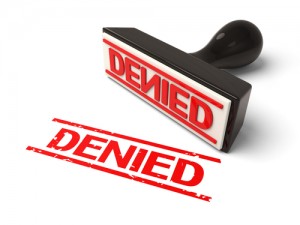Ever since Mattis v. State Farm Fire & Cas. Co., 118 Ill.App.3d 612, 73 Ill.Dec. 907, 454 N.E.2d 1156 (1983), Illinois courts have held that an earth movement exclusion contained in a first-party policy applies only to earth movement due to natural causes. At the beginning of this month, however, a federal court in Missouri construing Illinois Law found otherwise with respect to mine subsidence. In Hutchinson v. Pacific Indem. Co., 2015 WL 5139183, 2015 U.S. Dist. LEXIS 112239 (E.D.Mo., Sep. 1, 2015), the court held that an earth movement exclusion was unambiguous and clearly barred coverage for such a loss.
 The policyholders owned a home in Alton, Illinois that was totally destroyed by “a mine subsidence event” on May 28, 2011. The contract of insurance – a Chubb Masterpiece Policy with “Deluxe House Coverage” – afforded $3,236,000 in dwelling coverage, but it excluded “any loss caused by earth movement, including volcanic eruptions, landslides, mud flows, and the sinking, rising, or shifting of land[.]” Illinois’ Mine Subsidence Act required that the insurer afford $750,000 in coverage for loss by that peril, however.
The policyholders owned a home in Alton, Illinois that was totally destroyed by “a mine subsidence event” on May 28, 2011. The contract of insurance – a Chubb Masterpiece Policy with “Deluxe House Coverage” – afforded $3,236,000 in dwelling coverage, but it excluded “any loss caused by earth movement, including volcanic eruptions, landslides, mud flows, and the sinking, rising, or shifting of land[.]” Illinois’ Mine Subsidence Act required that the insurer afford $750,000 in coverage for loss by that peril, however.
The carrier paid $750,000 to the insureds, but they contended that their loss was covered under both the statutorily-required mine subsidence coverage and the basic grant of “all risk” Deluxe House Coverage. The policyholders therefore sought to recover the overall limit of liability in the amount of over $3M, and they brought suit after the insurer balked. Read more ›

 The insureds alleged that their home was damaged by sinkhole activity in March of 2011. The insurer denied, contending, inter alia, that while the contract of insurance did not expressly include or exclude sinkhole loss, it did bar coverage for damage caused by “the sinking, rising, shifting, expanding, or contracting, of earth or any other supporting, or surrounding, material.” The policyholders then brought suit. When the contract of insurance incepted, Tenn.Code Ann. § 56-7-130(b) recited that “[e]very insurer offering homeowner property insurance in this state shall make available coverage for insurable sinkhole losses on any dwelling.” It was undisputed that the carrier never informed the insureds that they could purchase sinkhole coverage, and their complaint asserted that that was a violation of the statute.
The insureds alleged that their home was damaged by sinkhole activity in March of 2011. The insurer denied, contending, inter alia, that while the contract of insurance did not expressly include or exclude sinkhole loss, it did bar coverage for damage caused by “the sinking, rising, shifting, expanding, or contracting, of earth or any other supporting, or surrounding, material.” The policyholders then brought suit. When the contract of insurance incepted, Tenn.Code Ann. § 56-7-130(b) recited that “[e]very insurer offering homeowner property insurance in this state shall make available coverage for insurable sinkhole losses on any dwelling.” It was undisputed that the carrier never informed the insureds that they could purchase sinkhole coverage, and their complaint asserted that that was a violation of the statute.  The insured owned a commercial building in Boulder, a city which experienced unprecedented rainfall in September of 2013. On September 12th, “a violent flow of water, mud, rocks, trees, and other debris traveled down a nearby hillside [and this] knocked down a wall of the building, causing the building to partially collapse.”
The insured owned a commercial building in Boulder, a city which experienced unprecedented rainfall in September of 2013. On September 12th, “a violent flow of water, mud, rocks, trees, and other debris traveled down a nearby hillside [and this] knocked down a wall of the building, causing the building to partially collapse.” In February, we reported on an Alabama federal court decision that barred an insured from recovering for employee theft where the only evidence of shortage was a comparison between computer records and a physical inventory conducted after the malefactor had been discharged. On August 6th, a unanimous panel of the Eleventh Circuit affirmed in
In February, we reported on an Alabama federal court decision that barred an insured from recovering for employee theft where the only evidence of shortage was a comparison between computer records and a physical inventory conducted after the malefactor had been discharged. On August 6th, a unanimous panel of the Eleventh Circuit affirmed in  The insured’s home was damaged by 2011’s massive Bastrop County Complex Fire. After disputes arose over the amount of loss, the insurer invoked the appraisal clause in the contract of insurance. The parties’ appraisers were unable to agree on an umpire, and the carrier then requested that the court appoint one. The district judge proceeded to do so, and, four months later for unspecified reasons, removed him and appointed a replacement umpire in his stead.
The insured’s home was damaged by 2011’s massive Bastrop County Complex Fire. After disputes arose over the amount of loss, the insurer invoked the appraisal clause in the contract of insurance. The parties’ appraisers were unable to agree on an umpire, and the carrier then requested that the court appoint one. The district judge proceeded to do so, and, four months later for unspecified reasons, removed him and appointed a replacement umpire in his stead. There are obviously many reasons for this. The west is undergoing a historically severe drought; the snowpack in California is currently 5% of what it should be. The region is also suffering from extreme heat; 2015 is the second warmest year ever recorded in Alaska, and temperatures in the west as a whole are now averaging two degrees hotter than they did in the 1980’s. This year’s “Godzilla” el Niño is also a factor, because that tends to heat the west coast but inhibit hurricane formation in the Atlantic basin.
There are obviously many reasons for this. The west is undergoing a historically severe drought; the snowpack in California is currently 5% of what it should be. The region is also suffering from extreme heat; 2015 is the second warmest year ever recorded in Alaska, and temperatures in the west as a whole are now averaging two degrees hotter than they did in the 1980’s. This year’s “Godzilla” el Niño is also a factor, because that tends to heat the west coast but inhibit hurricane formation in the Atlantic basin. The insureds owned a home in Seaside Heights that was demolished by the storm on October 29, 2012, and they filed a claim for “storm damages.” Their homeowners carrier had the property inspected by an engineer, and he concluded that while wind had caused some damage to the structure, its loss was primarily attributable to storm surge and flooding.
The insureds owned a home in Seaside Heights that was demolished by the storm on October 29, 2012, and they filed a claim for “storm damages.” Their homeowners carrier had the property inspected by an engineer, and he concluded that while wind had caused some damage to the structure, its loss was primarily attributable to storm surge and flooding. “Read the policy, read the policy, read the policy” is a famous piece of advice for coverage counsel everywhere. Last Friday in
“Read the policy, read the policy, read the policy” is a famous piece of advice for coverage counsel everywhere. Last Friday in  A storm damaged the insured’s roof in December 2013, and she made claim under her homeowners policy. The contract of insurance called for payment on an ACV basis unless the damage had been completely repaired or replaced, and it defined ACV as “[t]he amount which it would cost to repair or replace damaged property with property of like kind and quality, less allowance for physical deterioration and depreciation, including obsolescence.” The insurer paid this amount after determining the replacement cost and depreciating both materials and labor, and it subsequently tendered the holdback after the roof had been fixed. The insured then brought suit, seeking class action status and arguing that the carrier’s practice of depreciating the cost of labor when determining ACV was unlawful.
A storm damaged the insured’s roof in December 2013, and she made claim under her homeowners policy. The contract of insurance called for payment on an ACV basis unless the damage had been completely repaired or replaced, and it defined ACV as “[t]he amount which it would cost to repair or replace damaged property with property of like kind and quality, less allowance for physical deterioration and depreciation, including obsolescence.” The insurer paid this amount after determining the replacement cost and depreciating both materials and labor, and it subsequently tendered the holdback after the roof had been fixed. The insured then brought suit, seeking class action status and arguing that the carrier’s practice of depreciating the cost of labor when determining ACV was unlawful. In December, 2008 Allstate and four affiliated companies brought suit against 63 defendants, alleging the violations of IFPA. Those sued included physicians, chiropractors, and medical and equipment providers. The 604 paragraph complaint asserted that the defendants that engaged in a wide-ranging scheme to defraud the carriers of over $8 million by providing unnecessary care, engaging in fraudulent testing, creating bogus medical bills and records, and even staging accidents and recruiting accident victims. The plaintiffs sought compensatory and treble damages, as well as equitable relief in the form of disgorgement of benefits already paid and liens on the defendants’ assets.
In December, 2008 Allstate and four affiliated companies brought suit against 63 defendants, alleging the violations of IFPA. Those sued included physicians, chiropractors, and medical and equipment providers. The 604 paragraph complaint asserted that the defendants that engaged in a wide-ranging scheme to defraud the carriers of over $8 million by providing unnecessary care, engaging in fraudulent testing, creating bogus medical bills and records, and even staging accidents and recruiting accident victims. The plaintiffs sought compensatory and treble damages, as well as equitable relief in the form of disgorgement of benefits already paid and liens on the defendants’ assets. 